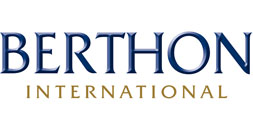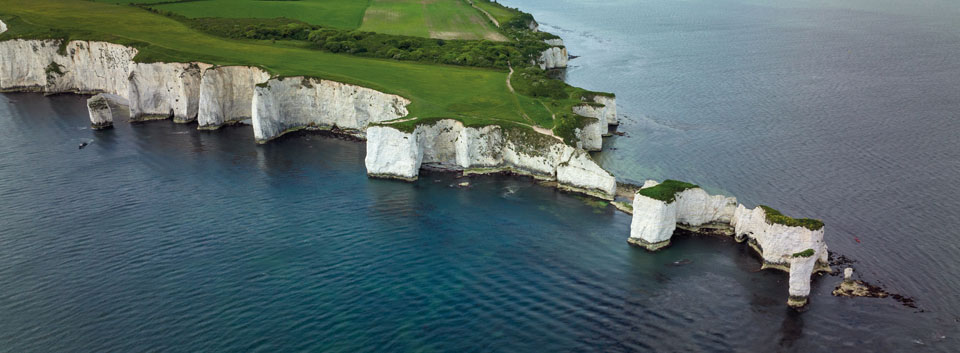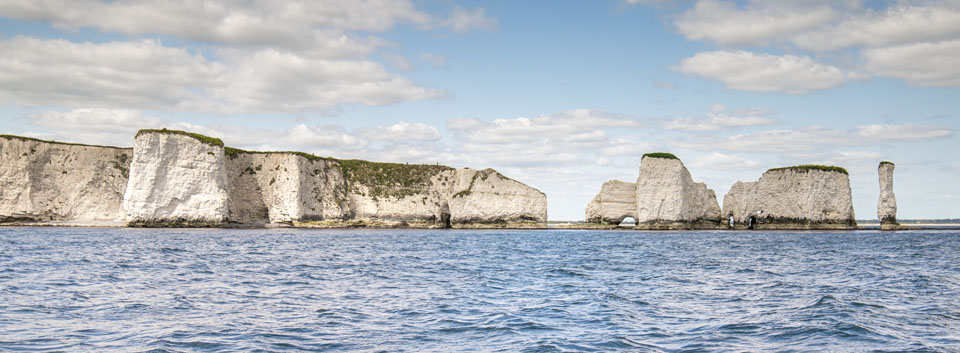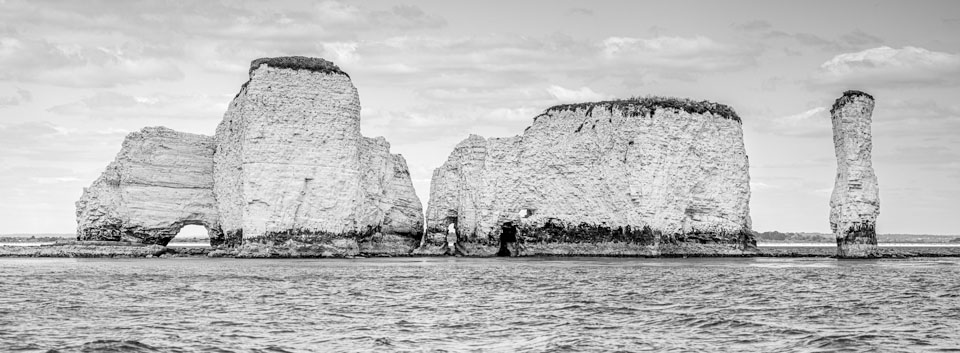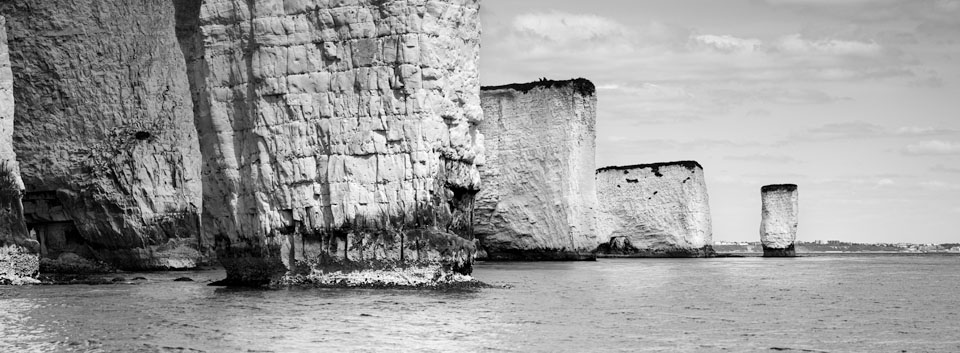Your Local Broker, Internationally
Berthon UK
(Lymington, Hampshire - UK)
Sue Grant
sue.grant@berthon.co.uk
0044 (0)1590 679 222
Berthon Scandinavia
(Henån, Sweden)
Magnus Kullberg
magnus.kullberg@berthonscandinavia.se
0046 304 694 000
Berthon Spain
(Palma de Mallorca, Spain)
Simon Turner
simon.turner@berthoninternational.com
0034 639 701 234
Berthon USA
(Rhode Island, USA)
Jennifer Stewart
jennifer.stewart@berthonusa.com
001 401 846 8404
Capturing Old Harry Rocks on Film
Photography © Harry Shutler, Berthon UK, berthoninternational.com
The cover of the Berthon Book this year features Old Harry Rocks, just over 20 miles as the crow flies from our HQ in Lymington and around 3 miles equidistant from Poole and Bournemouth in Dorset, home of the astonishing Jurassic Coast. The chalk of Old Harry Rocks was once part of a stretch of chalk running from Purbeck and the Isle of Wight that remained as a headland as large parts of the sea eroded. The headland suffered hydraulic action. This is where air and water are forced into small cracks, by the force of the sea enlarging the cracks, so that first caves and then arches are formed. The tops of the arches, when weakened by wind and rain, collapse leaving disconnected stacks. One such stack is Old Harry. His wife (another stack) fell away in 1896.
The naming of Old Harry is steeped in local legend. One is that the devil (traditionally euphemistically known as Old Harry) slept on the rocks. Another is that local Pirate Harry Paye, hid his ship behind the stacks lying in wait for local merchantmen. Our favourite is from the ninth century and tells of a Viking raid thwarted by a storm and that one of the drowned – Earl Harold, was turned into a pillar of chalk!
The photograph for the Berthon Book is always a matter of debate, and after Osborne House, the Needles and other watery landmarks, the iconic Old Harry got top votes for 2023. Having in-house photographer Harry Shutler on the staff is a huge plus. He is busy with video and film year round for all our yacht marketing group wide. With a degree in commercial photography and background working in black and white portraiture studios, mentored by Joe Craig of Missouri and with a love of all things nautical enhanced by a period steaming the planet on cruise ships and enjoying water sports at all stop overs, Harry is as boat mad as the rest of us. We thought that you might be interested to know how this imagery was captured…
He was dispatched on an 8.8m Gemini RIB driven by motor yacht broker Hugh Rayner. Successful photography from a boat relies heavily on the driver as Harry can’t see the wave movement so this is called out so that he can absorb the motion – a very different skill from filming on land with a long lens when the best technique is to remain as still as possible. Afloat its best to take a photo when your boat is on the crest of a wave or at the bottom of the trough as the boat will be moving slower which increases the chances of a pin sharp shot.
Harry’s weapons of choice were a DJI Mavic 3 Cine drone (which took the shot you see on the cover) and Sony A1 full-frame mirrorless camera. Taking images that are perfectly exposed both foreground and sky isn’t straight forward. The day was bright with little cloud and bright white cliffs backlit by the sun. Often this means that the sky is blown out when exposing for landscape. Exposing the sky, makes the foreground dark. There are 2 solutions for this – exposure blending – multiple shots with different exposure to be layered when the shot is put together at the computer later – not straightforward on a moving boat, or graduated neutral density filters. These are partially darkened filters placed on the front of the lens. The darkened part reduces the light at the camera’s sensor just like a regular neutral density filter. The difference is that only the top part of the GND is darkened, whilst the rest is transparent. This allows you to darken part of the shot.
Exposure is the amount of light that reaches your camera sensor. This is crucial as this makes images dark or bright. 2 settings affect luminous exposure – shutter speed and aperture. Camera ISO controls the responsiveness of the camera’s sensor to light. For every image there are a wide range of shutter speed, aperture and ISO settings that correctly used will deliver the correct exposure for the image to look good from depth of field to sharpness.
Shutter speed is the amount of time that a camera spends taking a picture. This could be 1/100 of a second, 1/10 of a second, 3 seconds or 5 minutes. Or it could be months. Harry’s longest exposure time was 3 months. Long shutter speeds let in a large amount of light. A 30-second shutter speed in full daylight will deliver a totally white image. The obverse also applies – a 1/8000 second shutter speed at night will provide a totally dark image. Movement is another factor (taking a shot from a rolling RIB) and that creates blur. So a longer shutter speed where the camera catches everything that moves during the exposure enables the sea to be smoothed out.
Harry also used a 512 ND9 stop filter which reduces light by 512 times so that shutter speeds can be increased by the same amount (half a second to 4 minutes and 15 seconds for example). This is a fourth way to manage exposure.
Think of the camera aperture as if it were the pupil of a human eye, it can open or close to change the amount of light. By changing the aperture and shutter speed settings you can capture exactly the right amount of light. Small apertures like f/11 to f/16 provide large depth of field so that everything from front to back is sharp. Large apertures provide a thinner depth of field, perfect to isolate a part of the image and blur everything else.
ISO does not affect the amount of light that reaches your camera, it brightens the image in-camera after your sensor has been exposed to light. It is great when you can’t brighten the image another way – say when using a longer shutter speed that will add blur when you are already at your widest aperture. However if too strong it will emphasize noise so the setting for Old Harry was 100.
Back at the computer the production of the cover image takes half a day and another couple of days to develop the other imagery you see in this article. Once the best are selected, the long preparation process begins –
- White balance to adjust temperature and tint for correct colour.
- Exposure for the overall brightness.
- Highlights that control the brighter parts of the image, and shadows the darker.
- Whites that set the brightest point and black the darkest.
- The variance between light and dark with contrast and clarity to enhance texture.
- Sharpening to restore some of the sharpness lost in the lens and image sensor.
- Noise reduction to smooth out any noise in the image. Noise is not grain, and is generally considered undesirable.
- Vibrance to heighten any muted colours.
- Which leaves only lens corrections, perspective corrections, radial filters, graduated filters, and masking where changes will be brushed onto the image. The hue is fine tuned, together with saturation and the luminance of particular colours.
This was how Old Harry was photographed, the same process that is used for all our yacht imagery and video. Not quite the same as the snap of an iPhone – no?
Read Another Article
Download the Berthon Book 2023-2024 XIX (21.3MB)
